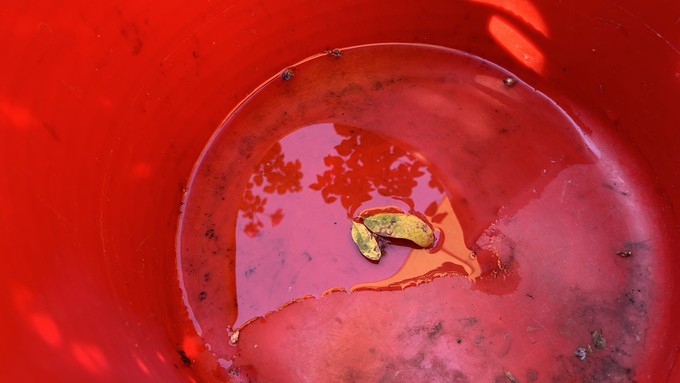
Tuesday's rain gets new water year off to good start

Tuesday night's rain left reminders behind. We might get more rain next week. In the meantime, dump accumulated rainwater from buckets and plant saucers to prevent mosquitos from breeding there. Kathy Morrison
The answer: A firm maybe.
A refreshing break after last weekend’s 90-degree weather, the rain wasn’t a lot, but it was a start. Sacramento recorded 0.15 inches on Tuesday, almost as much as we get in most Octobers, says the National Weather Service. Next Monday, the weather service predicts a 35% chance of more light rain.
Historically, October in Sacramento averages 0.18 inches for the entire month.
We’re coming off a whopper of a water year. Stretching from Oct. 1 to Sept. 30, our water year is a snapshot of our region’s rain and snow totals. The 2022-23 water year totaled 26.22 inches in Downtown Sacramento; that’s 7.02 inches more than Sacramento’s average for the past 30 years – 36.5% above normal.
Just as important for our water picture, the Sierra also had a bountiful water year. Blue Canyon, for example, recorded 92.09 inches of precipitation, way up from its average of 62.44.
Prospects of another wet winter are good. Warm water in the Pacific Ocean likely will fuel an El Niño weather system. El Niño systems typically soak California in mid to late winter.
But not always; some El Niño winters deliver a lot of storms to Southern California but not necessarily that much rain north of Fresno.
To be on the safe side, Sacramento-area gardeners and farmers should be prepared for more wet and cold conditions this winter. Dig up bulbs and tubers that could rot if left in the ground. Have frost protection ready to go early for tender plants. Don’t expect Christmas tomatoes; a cold November could prevent ripening.
According to the Old Farmer’s Almanac, the Central Valley can expect another wet winter plus some chilly nights. But most of our rain will arrive after the New Year.
“A strong El Niño means winter will be wetter than normal, with above-normal mountain snow,” the Almanac says in its 2023-24 winter forecast. “The stormiest, wettest periods will be in early and late January, early to mid-February, and mid-March. There will be a white Christmas across the Sierra Nevada mountains, but not in the valleys or along the coast.”
Expect some frost, too, maybe before Thanksgiving.
“Winter will be colder than normal throughout the region,” the Almanac predicted. “The coldest temperatures will occur in early and late November, early and late December, and late January.”
For more on Sacramento weather: https://www.weather.gov/sto/
Comments
0 comments have been posted.Sacramento Digs Gardening to your inbox.
Food in My Back Yard Series
April 1: Don't be fooled by these garden myths
March 25: Fertilizer tips: How to 'feed' your vegetables for healthy growth
March 18: Time to give vegetable seedlings some more space
March 11: Ways to win the fight against weeds
March 4: Potatoes from the garden
Feb. 25: Plant a fruit tree now -- for later
Feb. 18: How to squeeze more food into less space
Feb. 11: When to plant? Consider staggering your transplants
Feb. 4: Starting in seed starting
Sites We Like
Garden Checklist for week of March 30
Your garden doesn’t mind April showers. Get busy now to enjoy those future flowers.
* Get ready to swing into action in the vegetable garden. As nights warm up over 50 degrees, start setting out tomato, pepper and eggplant transplants.
* From seed, plant beans, beets, cantaloupes, carrots, corn, cucumbers, melons, pumpkins, radishes and squash. (Soak beet seeds overnight in water for better germination,)
* Plant onion sets.
* In the flower garden, plant seeds for asters, cosmos, celosia, marigolds, salvia, sunflowers and zinnias.
* Transplant petunias, zinnias, geraniums and other summer bloomers.
* Plant perennials and dahlia tubers for summer bloom.
* Transplant lettuce and cabbage seedlings.
* April is the last chance to plant citrus trees such as dwarf orange, lemon and kumquat. These trees also look good in landscaping and provide fresh fruit in winter.
* Smell orange blossoms? Feed citrus trees with a low dose of balanced fertilizer (such as 10-10-10) during bloom to help set fruit. Keep an eye out for ants.
* Apply slow-release fertilizer to the lawn.